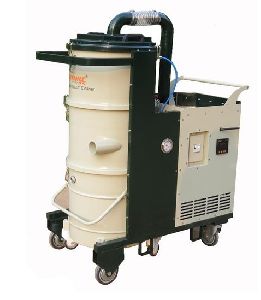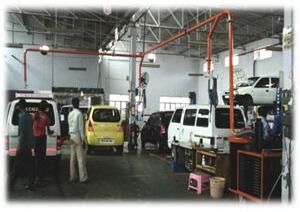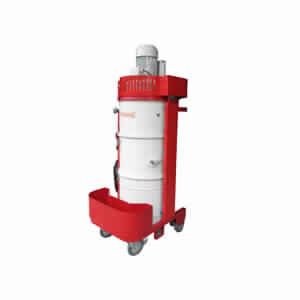
central vacuum cleaner
Get Price Quote
Factors to consider Type of material Quantity of material Weight of material Characteristics of material (i.e. sticky, wet, dry, etc.) Particle size Length of piping system Diameter of hoses Length of hoses and type of accessories Characteristics of atmosphere (i.e. Explosive, outdoors, indoors etc.) Number of operators How it works Three Phase Centralized vacuum cleaners have the blower and filtration unit located in a central location, and is connected by pipes to fixed vacuum inlets installed throughout the premises. Only the hose and cleaning accessories need be carried to different locations for cleaning. UPVC or metal piping connects the inlets to the central unit. The dirtbag or collection bin in a central vacuum system is usually large enough that emptying or changing need not be done very often. The central unit usually stays on standby and is turned on automatically only when required. A centralized vacuum system typically produces greater suction than common portable vacuum cleaners because a larger blower and more powerful motor can be used when it is not a portable system. A cyclonic separation system does not lose suction as the collection container fills up until the container is almost full. Three Phase Centralized vacuum cleaners offer higher cleaning because unlike a standard vacuum cleaner, which must blow some of the dirt collected back into the room being cleaned (no matter how efficient its filtration), a central vacuum system removes all the dirt collected to the central unit. Since this central unit is usually located outside the main area, no dust is re-circulated back into the room being cleaned. Another benefit of a centralized vacuum system is because the blower unit is located in a remote location, there is much less noise in the room being cleaned than with a standard vacuum cleaner. Components Central vacuum systems are made up of seven major components: the vacuum producer, filtration system, container, discharge device, conveying/piping system, hose and other accessories and the control system. All the components must be designed to work specifically for your application. No two systems will be the same, so each must be engineered for your specific requirements. The Vacuum Producer - For most centralized vacuum systems, we use roots blowers. For certain applications, ring blowers or centrifugal blowers may be used. The Filtration System - Filtration systems may use bag filters or cartridge filters depending on the application. Depending on the quantity and type of dust, we usually provide a pulsejet online self-cleaning mechanism. Storage - If the material is to be continuously discharged back to the process, no internal storage is required. If the material is to be stored within the system, and batch discharged, a certain storage capacity is required. The Discharge Device - The discharge device predominantly used in our central vacuum systems are rotary airlock valves. The Piping Network - The piping must be designed optimally to ensure that the dust/material is conveyed to the filter without any hindrance. The Hose and Tools - Hose and tools must be lightweight, yet be of a robust, industrial duty design as required for the application. Selection is based on ergonomic design and the ability to stand up to abuse.

Centralized Vacuum cleaner
Get Price Quote
By keeping records of the clients' requirements, we have developed a system that offers several options for transferring money from one end to another. For making sure about the safety of the products during handling, transporting and warehousing, we make use of quality packaging material. And, this task is accomplished by our deft professionals.Technical Data : Centralized Vacuum Cleaning Systems are customized to meet customers facility requirements. Dynavac engineers carry out an engineering study with input from the end user regarding cleaning requirements and evacuation port locations. Dynavac will provide a technical and commercial proposal at the end of the engineering study. For further details, you can contact us at info@dynavac.orgFeatures : Low Investment Energy Conservation Ease of Operation Flexibility Efficient Cleaning Mechanism Less Noise Applications : Automobile Service Stations Large Factory Floors Textile Units Clean Rooms Pharmaceutical Industry Chemical Plants Cement Plants
Best Deals from Industrial Vacuum Cleaner

Auto Industrial Heavy Duty Wet and Dry Vacuum Cleaners
Get Price Quote
Dynavac® Hydra-Auto Series Industrial Heavy Duty Wet & Dry Vacuum Cleaners are fitted with an automatic filter cleaning mechanism. A pulsejet of compressed air is periodically released against the filter to keep it from clogging and thus running at maximum efficiency. A compressed air inlet has to be provided by the end user. Also the Upgraded version of this model is developed with the added features and advanced design from Dynavac® is that It has a ’in-built’ single piston cylinder 0.2 HP compressor which provides the pulse of compressed air required for automatic filter cleaning. There is no requirement for an external source of compressed air.

Industrial Vacuum Cleaners
Get Price Quote
Industrial Vacuum Cleaners, dust extractors, ring blowers

Centralized Vacuum cleaner
Get Price Quote
Centralized Vacuum cleaner

Industrial Vacuum Cleaners
Get Price Quote
Industrial Vacuum Cleaners, Vacuum Table, textile vacuum cleaner, Blowers